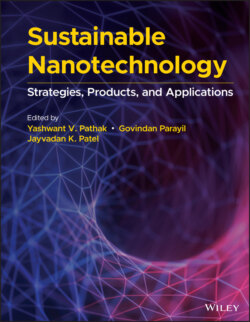Читать книгу Sustainable Nanotechnology - Группа авторов - Страница 46
2.2.1 Accountability of Nanomaterials and Related Toxicity
ОглавлениеThe developments in NMs are evolving as an inevitable part of daily life. With increase in the use of nanostructured material, it will eventually augment its exposure to the environment and to all those living and nonliving things that are made up of natural NMs called atom. Although the overall exposure by NM will be very less currently, in future with surge in the acceptance, the likelihood of exposure will increase. The effects of nanocomponents on environment are unknown as it largely depends on exposure and toxicity. Even after the selection of relatively less toxic material, the chance of harmful effects is unpredictable. Ironically, the unique properties of nanoparticles (NPs) that convey significant characteristics bring toxicity as well [20]. For instance, a naturally occurring oxide of titanium (TiO2), which is frequently used in the preparation of NMs, in the presence of sunlight, these TiO2 NPs can be toxic to some freshwater organisms even at parts‐per‐billion levels due to uptake and in situ photogeneration of reactive oxygen species [21, 22]. The severity of toxicity of NMs depends on the physicochemical properties, viz., size, surface area, structure, shape, stability, and surface energy [20]. These make an imperative need to assess the toxic effect based on composition and physicochemical properties of NMs.
Figure 2.1 Road to sustainability in nanotechnology.
